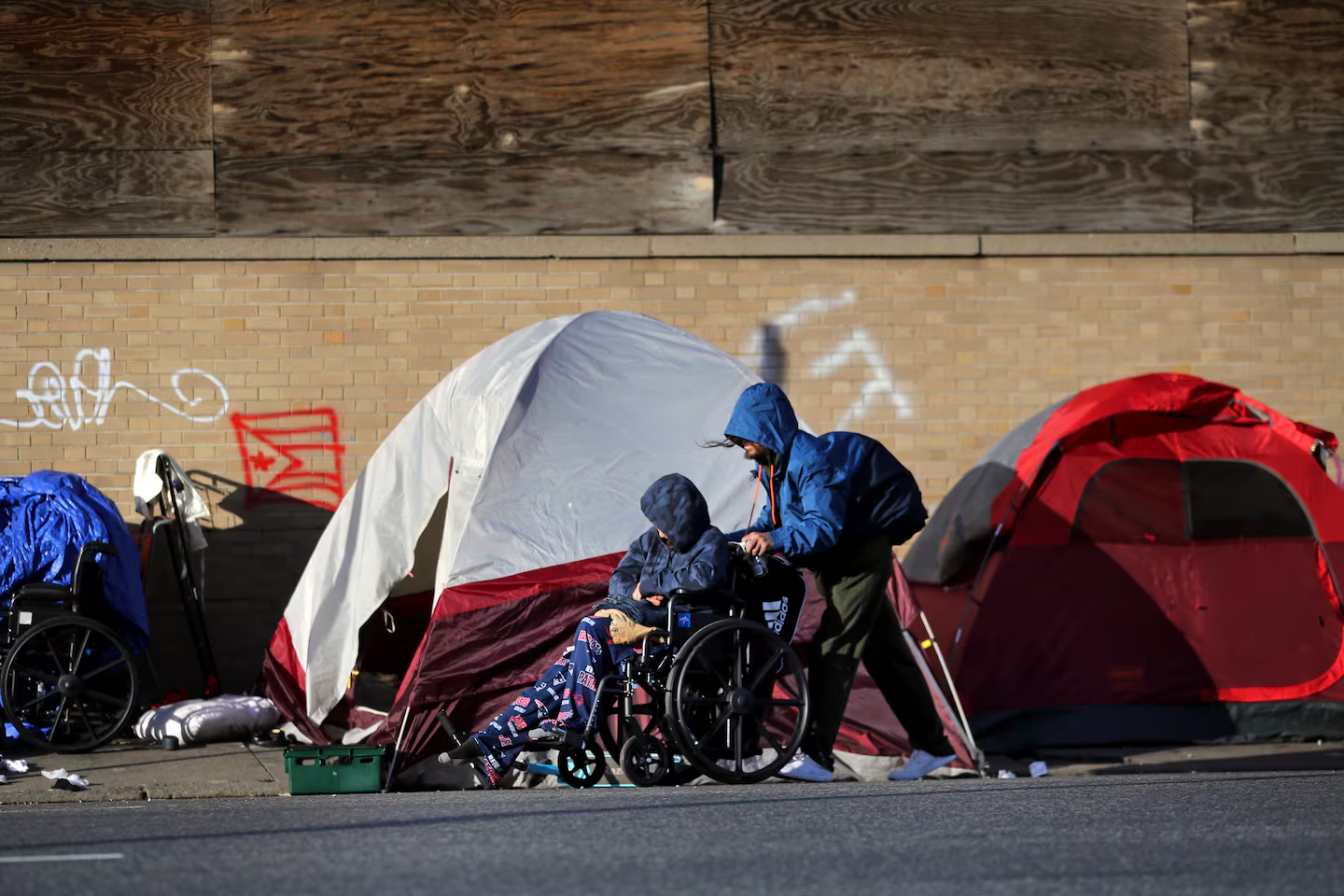Sad News: San Diego County Faces Unprecedented Crisis as Homelessness Rates Soar, Thousands Left Without Shelter due to….read more
Sad News: San Diego County Faces Unprecedented Crisis as Homelessness Rates Soar, Thousands Left Without Shelter
San Diego County, once known for its sun-kissed beaches and vibrant culture, is now grappling with a crisis that threatens to overshadow its reputation as a tourist destination and a thriving metropolitan area. The region has been hit with an unprecedented surge in homelessness, with thousands of individuals and families left without shelter.

A Stark Reality: Homelessness Rates Soar
Recent reports indicate that homelessness in San Diego County has reached staggering levels, with no signs of abating. According to the latest data from the Regional Task Force on Homelessness, the number of people experiencing homelessness has climbed to record highs in 2025. The situation has become so dire that experts are calling it a “humanitarian crisis.”
At last count, over 8,000 individuals are living without shelter, a sharp increase from just a few years ago. The homeless population is diverse, including families with children, veterans, and older adults, all of whom are facing increasingly difficult circumstances. The crisis has placed enormous strain on the region’s shelters, outreach programs, and emergency services, with many facilities operating at full capacity and unable to meet the growing demand.
Root Causes: Rising Housing Costs and Economic Pressures
The root causes of this surge in homelessness are multifaceted, but one key factor stands out: rising housing costs. In recent years, the San Diego housing market has become one of the least affordable in the nation. With rents soaring and home prices out of reach for many, more individuals and families are finding themselves priced out of stable housing.
The economic pressures have been exacerbated by the pandemic’s lingering effects, which caused job losses, disruptions in the workforce, and increased financial instability for many households. As the cost of living in San Diego continues to rise, more people are slipping through the cracks, unable to maintain housing due to an unsustainable combination of stagnant wages and high living expenses.
Insufficient Support Systems and Policy Gaps
While homelessness has been an issue in San Diego for years, the current crisis highlights a troubling gap in the support systems meant to assist those in need. Despite efforts to address the issue through temporary shelters, affordable housing initiatives, and outreach programs, the resources available have been insufficient to meet the growing demand.
Nonprofit organizations and community groups have worked tirelessly to provide emergency services, but these efforts are often overwhelmed by the sheer number of people needing assistance. At the same time, long-term solutions like affordable housing development and increased funding for mental health and addiction services have been slow to materialize.
Political leaders in the region have been criticized for failing to implement comprehensive, sustainable solutions to the homelessness crisis. The situation has sparked heated debates about the role of local, state, and federal governments in addressing homelessness. Some advocates argue that the focus needs to shift from temporary fixes to long-term policies that prioritize affordable housing and increased support for those struggling with mental health and substance abuse issues.
The Human Toll: A Growing Crisis of Despair
The human toll of this crisis cannot be overstated. For those living on the streets, the challenges are staggering. Many individuals struggle to secure basic needs like food, sanitation, and safety, and are exposed to harsh conditions that worsen their physical and mental health. The trauma of homelessness is often compounded by a lack of access to necessary medical care, addiction treatment, and psychological services, which can perpetuate the cycle of instability.
The visible increase in homeless encampments throughout the county has sparked concerns among residents and businesses, some of whom feel their communities are becoming increasingly unsafe. However, many advocates urge residents to recognize the humanity of those experiencing homelessness and to support policies that prioritize empathy, support, and long-term solutions over punitive measures.
A Call for Action: Can San Diego Turn the Tide?
As the crisis in San Diego County deepens, there is a growing sense of urgency among advocates, service providers, and concerned citizens. Many believe that this is a pivotal moment for the region to take meaningful action to address the homelessness crisis. With the right mix of political will, public investment, and community engagement, experts believe it is possible to turn the tide.
Possible solutions include:
- Expanding Affordable Housing: The most critical step is increasing the availability of affordable housing. This includes not only building new homes but also preserving existing affordable units and providing rental subsidies to those most at risk of losing their housing.
- Investing in Mental Health and Addiction Services: Many people experiencing homelessness also struggle with mental health and substance use disorders. Expanding access to these critical services can help individuals regain stability and self-sufficiency.
- Improved Outreach and Support Systems: A more coordinated and accessible system of support, including outreach teams that engage individuals on the streets and connect them to necessary services, can make a difference in moving people from homelessness to stable housing.
- Public Awareness and Community Involvement: Public education campaigns can help reduce stigma surrounding homelessness and encourage community involvement in solutions.
Looking Ahead
The homelessness crisis in San Diego County is a stark reminder of the deepening inequalities that many communities face. It is also a call to action for all levels of government, as well as for residents and organizations to come together to find compassionate and sustainable solutions. As thousands continue to struggle without shelter, the urgency for change has never been greater.
Whether or not San Diego County can overcome this crisis will depend on the collective efforts of those committed to ensuring that every individual has access to the basic human right of shelter and safety. The time for action is now.











Post Comment